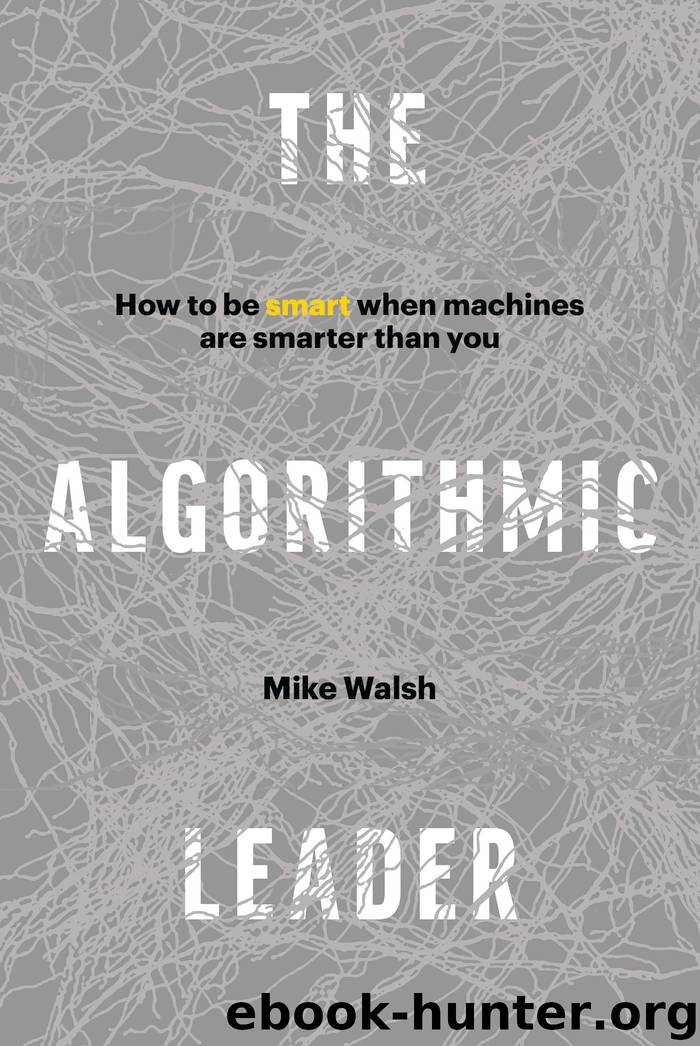The Algorithmic Leader by Mike Walsh

Author:Mike Walsh
Language: eng
Format: epub
Publisher: Mike Walsh
Published: 2018-12-09T16:00:00+00:00
Set the stage for smart ideas
In mid-2016, IBM started calling people back to the office.
Jeff Smith, IBM’s CIO, was determined to make his company more agile, which to his mind meant that more work had to be done by small teams constantly collaborating on projects and using data to make decisions. That meant that people would need to spend more time in the office.
Many IBM employees had worked from home successfully for years, but when the company researched the most disruptive, original, and successful teams, they discovered they were generally those that were based in a single location. In Smith’s words, “Leaders have to be with the squads and the squads have to be in a location.”
Remote work had been a feature of life at IBM for a long time. Remote terminals had been installed in some employees’ homes as far back as the 1980s; in 2009, when many companies were still insisting their staff turn up to a campus or office for work, 40 per cent of IBM’s 386,000 global employees worked from home. But at a time when the company required fresh ideas and more disruptive innovation, its leaders were hoping that bringing people back together might deliver the productivity gains it needed.
IBM was not alone in its attempts to reboot the workplace. Packing smart people into one place as a catalyst for creativity is not a new idea. Even at the scale of cities, there is evidence that concentration leads to more fruitful connections. Influential twentieth-century urban theorists like Jane Jacobs and economists like Robert Lucas Jr. argued, for example, that dense packs of talented workers boost local economies and innovative thinking. Could algorithms and data also assist leaders in optimizing for these types of outcomes?
On a visit to Seattle, I spent some time with Dan Anthony and Sean McKeever, two architects and leaders of NBBJ’s design computation team. NBBJ is one of the world’s leading design firms, used by technology companies like Google and Amazon in the US, and Alipay and Tencent in China.
NBBJ is increasingly using algorithmic, computational design frameworks to help its clients reinvent their workspaces. This approach, known as parametric design, uses algorithms and computer models to simulate how a building’s occupants will use a space. Typically, you might use a parametric model to link geometry with data to address specific requirements such as the kinds of views available from different offices. NBBJ has taken the idea a few steps further with its Human Experience Toolkit.
Working with neuroscientists and psychologists, NBBJ is embedding behavioral insights as variables in workplace models. A floorplan, for example, can now be algorithmically optimized for its collaborative potential, based on how easy it is for team members to see each other.
Alternatively, you might optimize for prospect and refuge, a human behavior theory in anthropology and neuroscience that posits that the part of our brain that evolved from our days living on the savannah still influences our response to the workplace. Humans feel safer and more comfortable when we can survey the area around us (prospect) and find a good cave to hide in (refuge).
Download
This site does not store any files on its server. We only index and link to content provided by other sites. Please contact the content providers to delete copyright contents if any and email us, we'll remove relevant links or contents immediately.
| Ethics | Etiquette |
| Fashion & Image | Health & Stress |
| Motivation & Self-Improvement | Work Life Balance |
| Workplace Culture |
Tools of Titans by Timothy Ferriss(8290)
Change Your Questions, Change Your Life by Marilee Adams(7670)
Deep Work by Cal Newport(6940)
Playing to Win_ How Strategy Really Works by A.G. Lafley & Roger L. Martin(6060)
Man-made Catastrophes and Risk Information Concealment by Dmitry Chernov & Didier Sornette(5946)
Digital Minimalism by Cal Newport;(5693)
Big Magic: Creative Living Beyond Fear by Elizabeth Gilbert(5670)
The Slight Edge by Jeff Olson(5372)
Ego Is the Enemy by Ryan Holiday(5332)
The Motivation Myth by Jeff Haden(5170)
The Laws of Human Nature by Robert Greene(5049)
Stone's Rules by Roger Stone(5045)
Tuesdays with Morrie by Mitch Albom(4722)
Eat That Frog! by Brian Tracy(4476)
Rising Strong by Brene Brown(4405)
Skin in the Game by Nassim Nicholas Taleb(4198)
Bullshit Jobs by David Graeber(4129)
The Money Culture by Michael Lewis(4119)
Skin in the Game: Hidden Asymmetries in Daily Life by Nassim Nicholas Taleb(3958)
